Author: Dan Ning
:D :D
Social practice art: Examples
Public reflection type:
Public apology karaoke:
http://zacharygough.ca/new-blog-2/2015/3/5/public-apology-karaoke
I also encountered this artwork called blind field shuffle which i would put in this category.
Prompting others to act type:
The art and social practices workbook:
https://guestwork.org/The-Art-and-Social-Practice-Workbook
http://a.nnotate.com/docs/2014-05-12/bcizgvh6/RP_1_WKBK_FINAL_REV.pdf
Environmental activist type:
Animal watching(?)
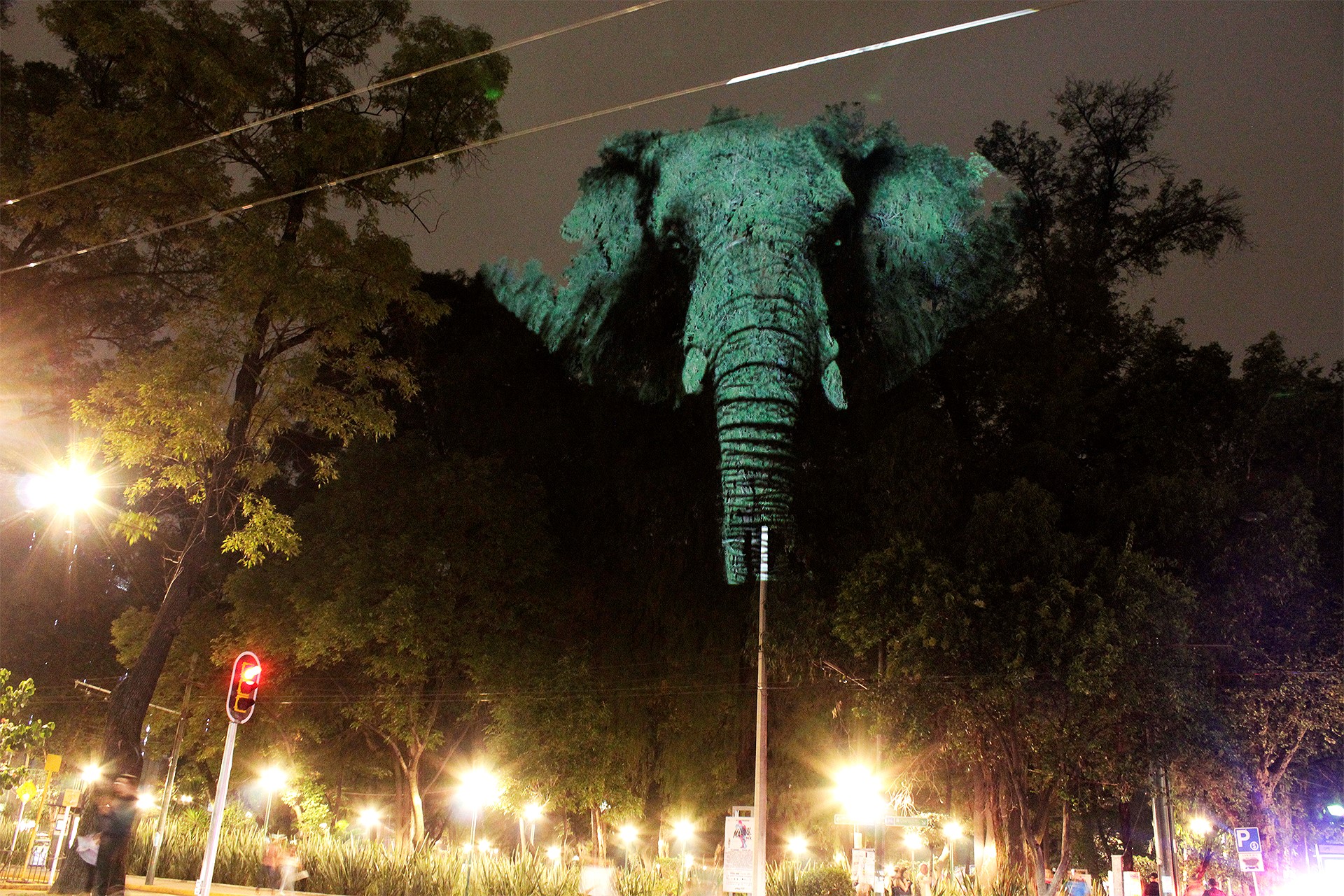
Not too sure whether this is social practice art cus there is not much social engagement in this art piece.
In general a lot of social practice art is just providing a platform and opportunity or inspiration for others to act and get involved instead of doing the actual artwork themselves.
Reading Assignment Reflection
Thoughts on A critique of social practice art:
Instead of using art to show people what the already know, such as an idea that show people how the emission of greenhouse gases are harmful, It is good to think harder to achieve an artwork that enables others to act. such as the Project Row Houses which Lowe had initiated in 1994 which was described in the article in which it seemed to me more of a community project rather than an artpiece. Also it was states in the article that this “artwork” or activism has caused a higher poverty rates than that before the project was started. In my opinion the project itself was for a good cause but failed to be a practical and logical project which may have come from the fact that it was an “artwork and not a true solution to the problem or was deemed as “experimental”. (Note to self: an artwork which lets the audience contribute to the solving the issue presented would be good as an artwork that enables the audience to start acting.)
However, social practice itself seems to not be defined by any bounds of traditional artistic aesthetic but rather focus on experimenting and the actions and feelings presented and experienced through the artwork. I can understand the thrive for an art form that “makes a difference” but while traditional art making methods remain to be a more “niche” area which people tend to appreciate and not act on, one must reconsider how social practice art is presented and the real world impacts it gives.
Thoughts on Digital Age:
Chapter one is mainly about how you should go about initiating a project and what the article defines as Goal Directed design. In a way this reminds me of the fact that design and programming/ engineering are very similar where you define a problem you want to solve, then solve the problems using methods. Design must serve a human need and goal. It is stated in the paragraph that “all designed artifacts have a purpose” which makes it different from art and more in the middle of engineering and art. ( It makes me question though: what about Fashion Design? Haute Couture usually is impractical for daily use and doesn not have an actual purpose for solving particular problems but serves to make a statement about a certain topic or explore the use of a new medium and material.) Goodwin has given a table of the Goal Directed process of design, which in the end goes to the step named implementation support which is when you have to start experimenting with the actual thing. It is important to note that the goal directed process is not a standalone process, it consists of most of the steps you have to take to start planning and researching on a project but does not specify the steps needed for implementation. I’m pretty sure that there are more steps needed to implement the project since the amount of testing, research and replanning is actually more vigourous than the planning process itself, there is and importance to focus more on getting to project to actually work than just the pen and paper work of planning or modelling out the project.

Interesting Wearable Technology projects
Exhibition: Human (Un)limited
Name: Posthuman Habitats
Designer: Aroussiak Gabrielian
Project Description: A vest that is filled with plant life essentially to circulate waste from the human body to provide nutrients for plants. ( essentially an entire ecosystem on a shirt)
The project highlights the scarcity of resources in the future, providing nutrition for the human wearer and contributing to the ecosystem outside of the vest itself.
The aims to reconnect food producers and consumers in a way that would make it more self reliant and resilient.


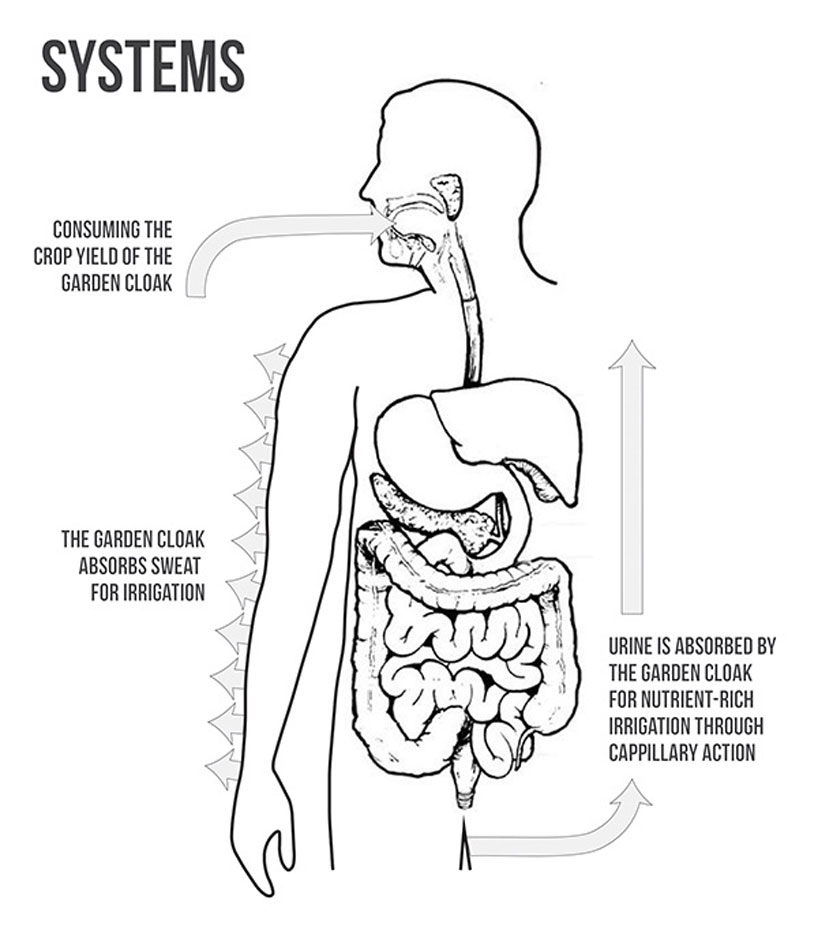
Link to project:
http://www.foreground-da.com/posthuman-habitats
Other interesting stuff:
https://www.sciencedaily.com/news/matter_energy/wearable_technology/
Biography
Dan Ning is an artist/designer with strong drawing and illustrative skills despite coming from academic Science background in Junior College. She is explorative in her work, branching her skills out to product design and interactive media. She believes in the significance of function before form. yet she presents expressively producing works that she describes as artistic engineering. She dwells within surrealistic nature of imagination inspired by Taiwanese illustrator Jimmy liao (几米). Hidden concepts behind pretty facades are what fuels her passion.
Dan Ning is a designer with a background in sciences coming from Junior College. Having dabbled in animation, interactive medias and product design, she believes that the product must always be functional before it is beautiful. She is always into exploring the meaning that artworks can bring to people as a language and how to utilize new mediums to express her purposes. She is often inspired by the Taiwanese illustrator Jimmy Liao , who utilizes a lot of metaphor in his work to express the words in an other-worldly manner. She is also a fan of Chinese artist Wu Guan Zhong, enjoying to explore the glaring but implied meaning in his artworks.
Sample work:
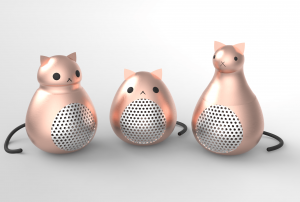
Cat speakers whereby the tails are hooks that can be used to hang the speakers.
Final Project Process and Research
The project is initially a bug that can avoid the person’s hand.
The movement is based on this Arduino project:
https://create.arduino.cc/projecthub/Jerepondumie/ugly-bug-348dc7
Testing with 2 additional motors:
testing front legs
testing back legs
3D printing:

The ball joint was not used in the end as it did not print properly.
Testing the 3d printed legs
testing the fit of the legs
I didn’t manage to fit 4 motors in the cover so I removed one of the motors.
The fitting of the wires was a problem but in the end, coiling the wires helped a lot.
Final Test
Device of the week: Health
The pod by eight sleep
/cdn.vox-cdn.com/uploads/chorus_image/image/63057929/The_Pod_image_10.0.jpg)
https://www.theverge.com/circuitbreaker/2019/2/15/18225978/eight-sleep-pod-smart-mattress-temperature-adjust-tracking-sleep-tech
There are many variations of the smart mattress but the eight sleep pod is one of the most highly rated mattresses.
the mattress can be controlled by an application on the smartphone.

During sleep, data is taken from the mattress about how much you toss and turn throughout the night. ( this is probably using pressure sensors that are spread out throughout the mattress itself)
There is also data on how long you have been asleep and when you have been asleep from.
There is also a temperature setting whereby you can set one half of the bed to warmer and the other to be colder catered for each person’s need.
The Pros:
For people who have difficulty sleeping, it is a good gauge of why you are not able to fall asleep. ( reasons may range from sleep posture to whether you are cold during your sleep)
The Cons:
Well spending nearly 2000 USD on a mattress is a lot .
This can be made smaller and into a T-shirt or pajamas to pressure sense sleep posture…? to make it probably more efficient than changing your entire mattress for better sleep.
link to mattress website:
https://eightsleep.com

Documentation: The Warning Tree
The Warning Tree:
With the initial idea of the LED-lit tree, I decided to use a PIR sensor with it to give it an interactive element. I was thinking of making it have an environmental message where everything you do would affect the environment but I guess I should have used a combination of sensors alongside the PIR so that there would be different effects. 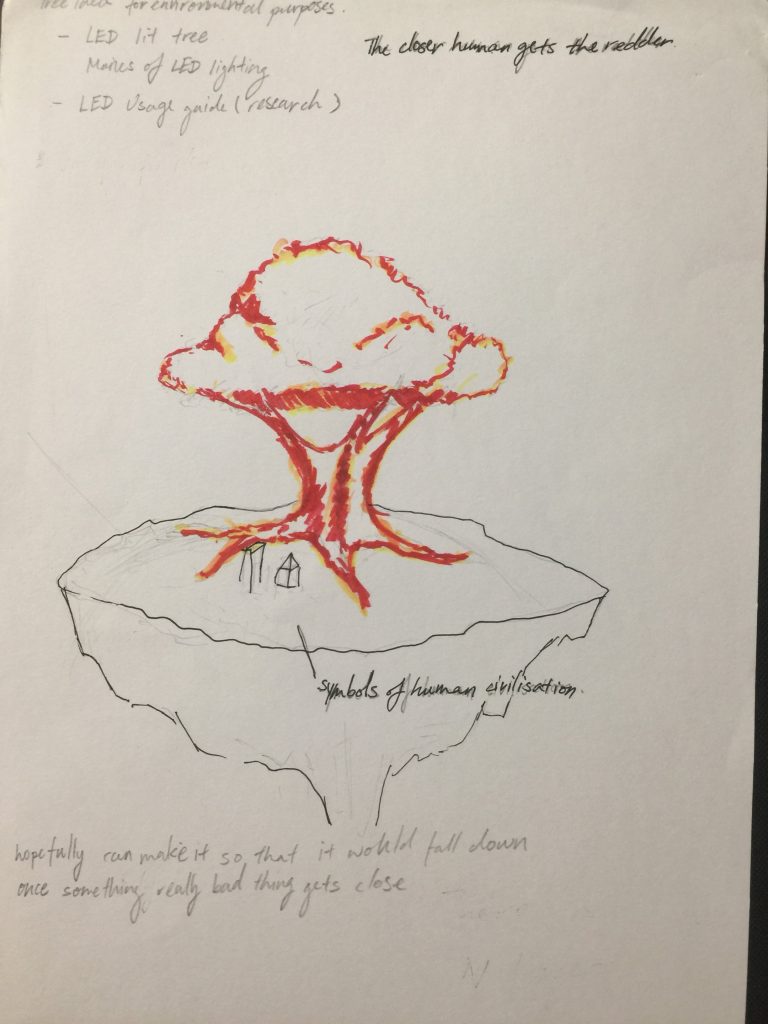
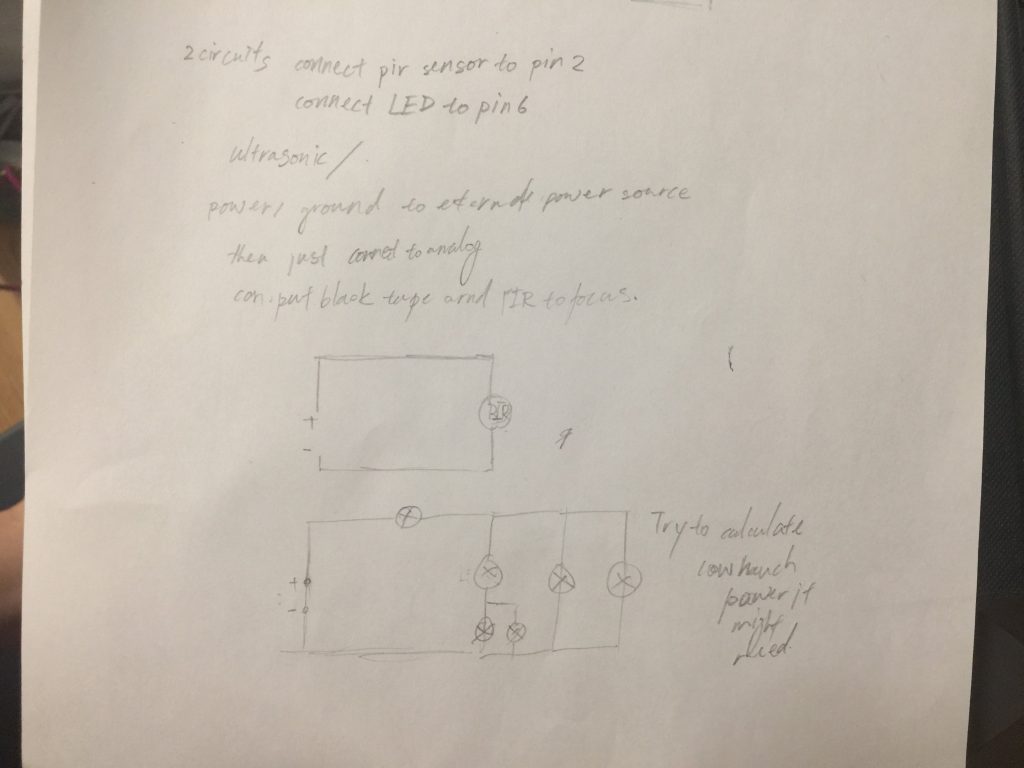 I did the technical aspect in three steps:
I did the technical aspect in three steps:
- test LED strips( making sure the “breathing” effect works)
- test PIR sensor( making sure my sensor was working properly cus it’s old)
- Put the two together to make variations
For the soldering:
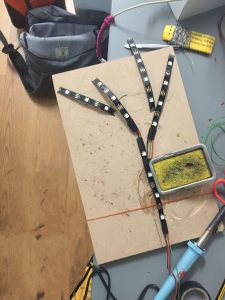
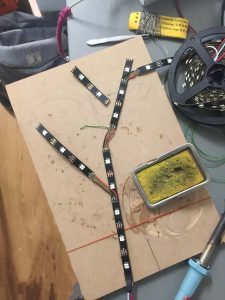
For the aesthetics melted plastic bags together as Galina had taught me but this time using a flat iron rather than a clothing iron. However, how to wrap it was a problem as I cannot apply direct heat on the LEDs as the LEDs might melt too. in the end, I used a hot glue gun to melt everything together .
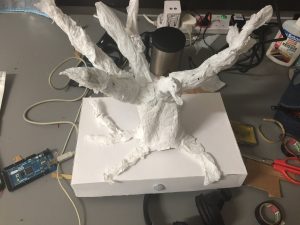
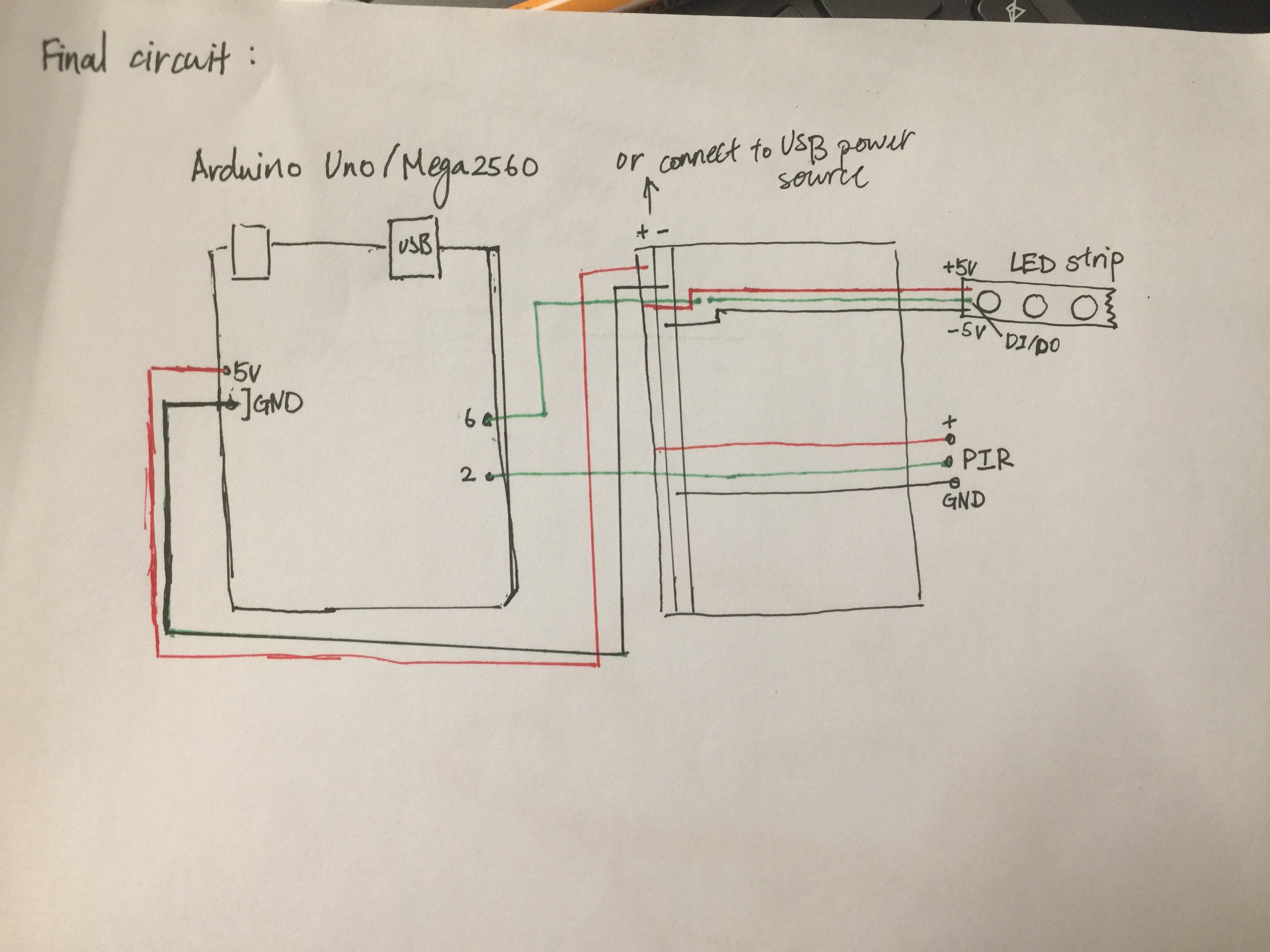
During the presentation, it was weird because the wires were connected properly but the tree didn’t light up but when I got home and tested it again, I realized it was a problem with the USB cable I was using. It was fine when I used the power source on the Arduino itself.
Final product:
link to PIR sensor concept:
https://learn.adafruit.com/pir-passive-infrared-proximity-motion-sensor/how-pirs-work
Video games and computer holding power
Losing oneself in the Simulated world.
people all have the tendencies to escape from( sorry abot this somehow my delete is not working probperly not sure what is wrong)
the main article that I have analysed is losing oneself in the simulated world. It is a very important idea that has affected our lives after the prevailence of the virtual worlds and mmmorpgs where people can live as the like in the rworld of their choice. The worlds in the internet is often idealised, filled with magic, mystery and have a lack of real world problems such as the need for food and money to survive. The attractive thing about games is also that the simulated worlds allows people to choose what they want to be, who they want to be and what they want to do easily, just sitting in front of a computer rapidly tapping on the keyboard. Yet as the article says, there is still limitations as to the games . It’s always filled with rules due to the restrictions of the algorithms and it is difficult to emulate the number of choicesyou have in the real world.
Minimalism
Minimalism reflection
The work I was inspired by in the minimalism exhibition was the room for one colour by Olafur Eliasson since not only was it impressive visually due (everyone went “wow” when they first entered the room ) but it has also given me a new perspective on how to use light as a medium. It made me think that somehow somethings we have always taken for granted like the spectrum of light, when taken away from our lives can make such a huge difference in how we view the world. Another thing that is interesting is that it takes not only the walls of the room as the canvas but also makes the people standing in it the artwork, allowing people to be involved in the artwork itself. It was very disorientating to see everyone in yellow, but it made me think of the possibilities of what I could possibly use the different spectrums of light for and how maybe a sculpture that was made originally could be made different with the different type of lighting presented. I realised this was a concept that I have not explored and may be interested in exploring, like the change of something static with reaction from something dynamic.